Are you curious about the state of dropshipping in 2026? Then you’ve come to the right place.
We’ve curated, vetted, and categorized the latest statistics below.
Click to jump to a section or keep reading for our best dropshipping and ecommerce statistics.
Key Dropshipping Statistics in 2026
- $372.47 billion: The global dropshipping market value today, up.
- 23%: Percentage of all online sales that come from dropshipping businesses.
- 27% of online stores use dropshipping as their main fulfillment method.
- 10%: The percentage of dropshipping businesses that make money in their first year.
- Most people doing dropshipping earn between $1,000 and $5,000 each month.
- 1.5%: Percentage of dropshipping businesses that earn over $50,000 each month.
- 84% of dropshippers say finding good suppliers is their biggest challenge.
- 75% of stores using automation for multiple tasks see higher profits.
- 50%: How much more profit dropshipping stores make compared to stores with inventory.
- 68% of dropshipping stores get most of their traffic from Meta ads.
General Dropshipping Statistics
- About 27% of online stores use dropshipping to handle their orders.
- Dropshipping makes up roughly 23% of all online sales around the world.
- Most dropshipping businesses see profit margins around 25%, though some well-optimized stores hit 50%.
- Only 10% of dropshipping stores turn a profit in year one, and just 1.5% crack $50,000 monthly revenue.
- Dropshipping stores that stay active on social media pull in 32% more revenue than those that don’t.
- Shopify has seen dropshipping stores jump from 5.16% to 12.82% of all stores on the platform.
- AliExpress is the go-to platform for dropshippers worldwide.
- Dropshipping stores typically generate 50% more profit than traditional inventory-based stores.
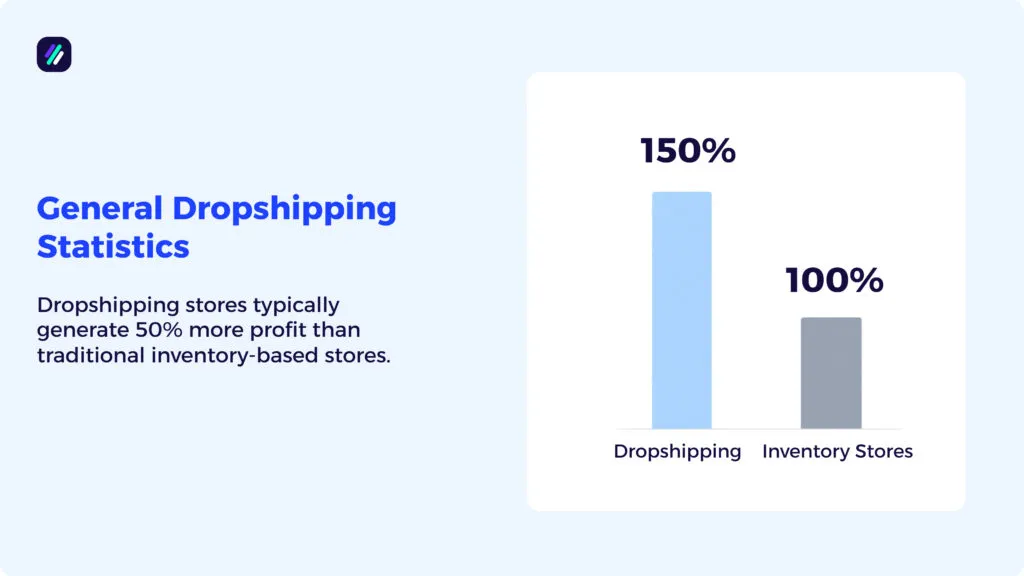
- More than 30% of ecommerce businesses now use dropshipping for order fulfillment.
- In North America, electronics account for 30% of all dropshipping activity.
- Dropshipping reportedly brings in 15 times more profit than affiliate marketing.
Dropshipping Industry Statistics
- The global dropshipping market is set to hit $372.47 billion this year, up from $301.11 billion last year.
- By 2026, the market should reach $476.1 billion, growing about 24% each year since 2020.
- North America’s dropshipping scene is expected to jump from $90.35 million in 2023 to $340.33 million by 2032.
- Asia-Pacific brings in 25% of global dropshipping revenue. China alone is projected to reach $136.7 billion by 2027.
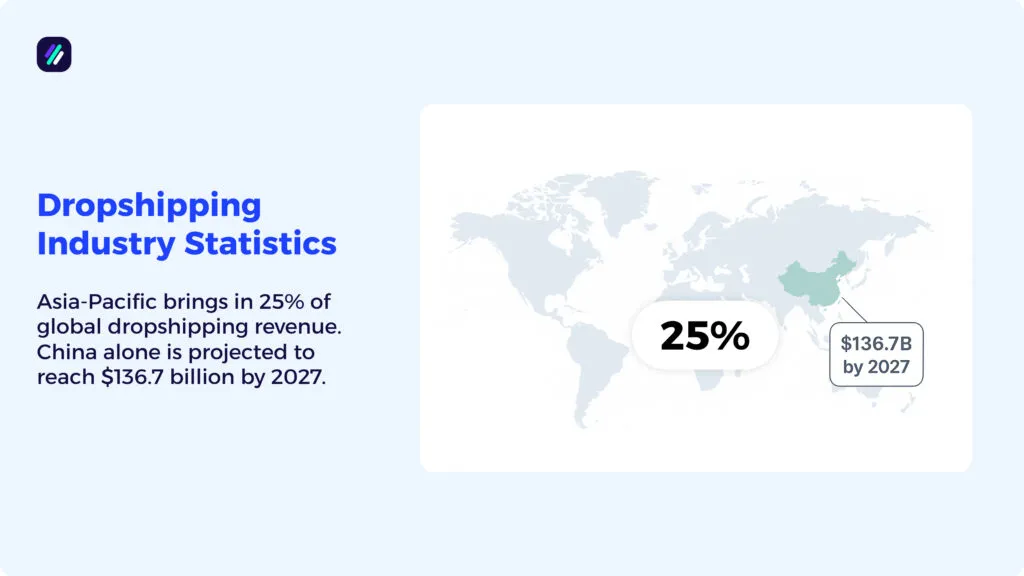
- Germany leads Europe’s dropshipping market and should grow around 20% annually through 2027.
- Fashion dropshipping is expected to hit $802.33 billion. Beauty and home goods are right behind as hot growth areas.
- Dropshipping software is worth $2.5 billion this year and growing about 15% annually, thanks to more businesses using automation and AI tools.
Demographics of Dropshippers and Buyers
- The majority of dropshippers are between 25 and 34 years old, often starting as side hustles.
- About 40% of new dropshippers are women, with rising interest in fashion and wellness niches.
- First-time store owners tend to come from marketing, design, or retail backgrounds.
- Most buyers who shop from dropshipping stores are aged 18 to 44, with mobile purchases leading desktop.
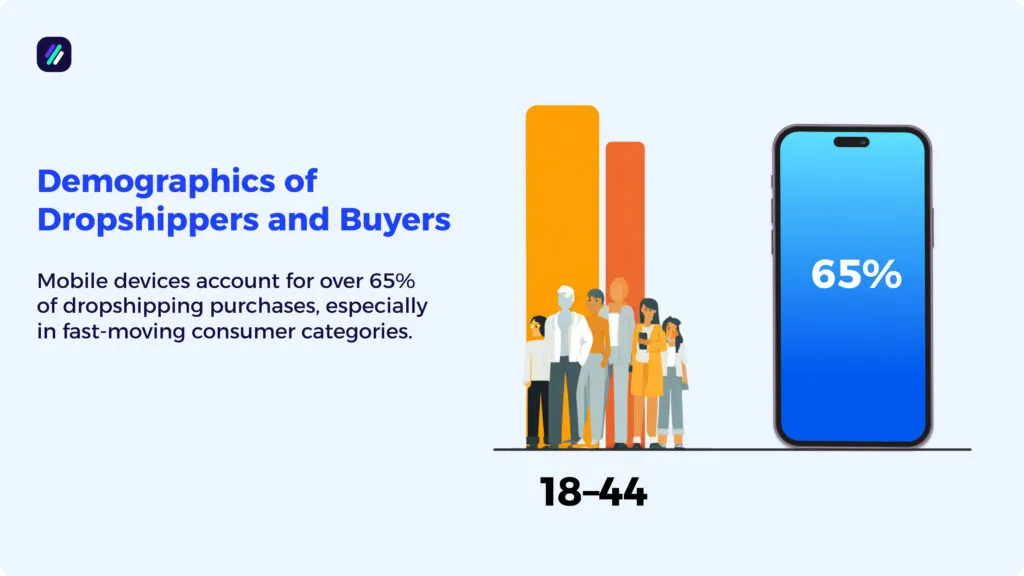
- US, UK, Australia, and Canada account for the highest buyer demand across general and niche products.
- 70% of buyers say reviews and store design influence trust when shopping from unfamiliar brands.
- Mobile devices account for over 65% of dropshipping purchases, especially in fast-moving consumer categories.
Dropshipper Business & Income Statistics
- Only 1.5% of dropshipping businesses make over $50,000 monthly. This shows how rare high-income stores are.
- Most dropshippers earn $1,000 to $5,000 monthly, depending on their products and marketing.
- A profit margin of 20% to 30% per sale is common for active dropshipping stores.
- Manufacturers who work with dropshipping partners make 18.33% more profit than those who only sell directly.

- Just 10% of dropshipping businesses turn a profit in year one, which shows how important it is to have a solid plan and stick with it.
- Top sellers say clothing is the most profitable category, with electronics and home goods coming in second and third.
- Around 84% of ecommerce entrepreneurs say their biggest challenge is finding suppliers they can trust.
- On eBay, the best dropshippers average $7,731 monthly, while the bottom 10% lose money on each sale because of fees and pricing problems.
Operational Trends in Dropshipping
- About 33% of ecommerce businesses prefer dropshipping over managing in-house inventory.
- Dropshipping stores with at least one social media account generate 32% more revenue.
- Sellers using automation platforms can fulfill up to 969 orders per month without manual processing.
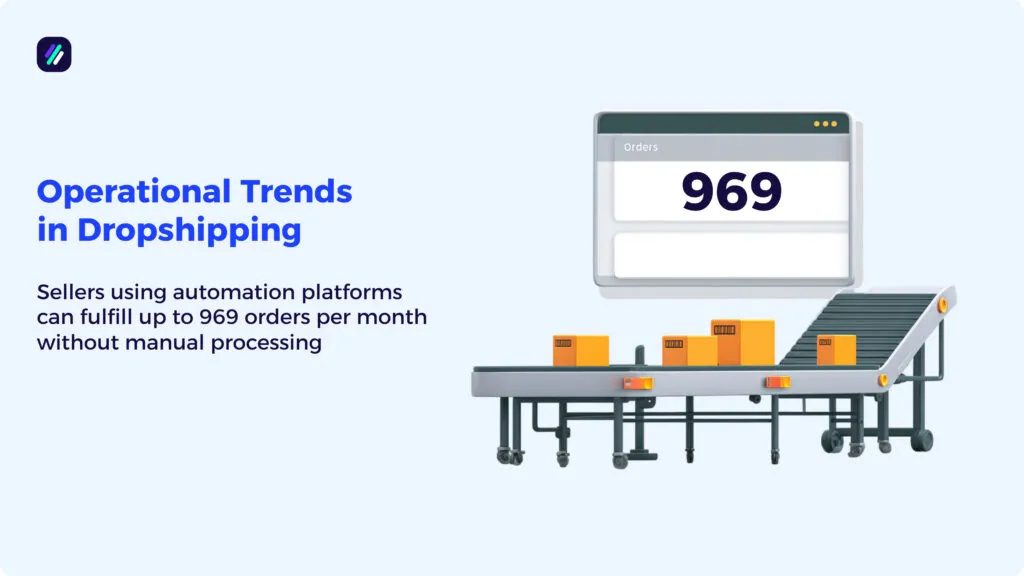
- 66% of online shoppers say they prefer stores that offer multiple payment options.
- 34% of Amazon sales are fulfilled via dropshipping by third-party sellers.
Dropshipping Marketing Stats
- Dropshippers using video ads get up to 3x more clicks than those using just images.
- Most dropshipping stores convert between 1.6% and 2.1% of visitors into buyers.
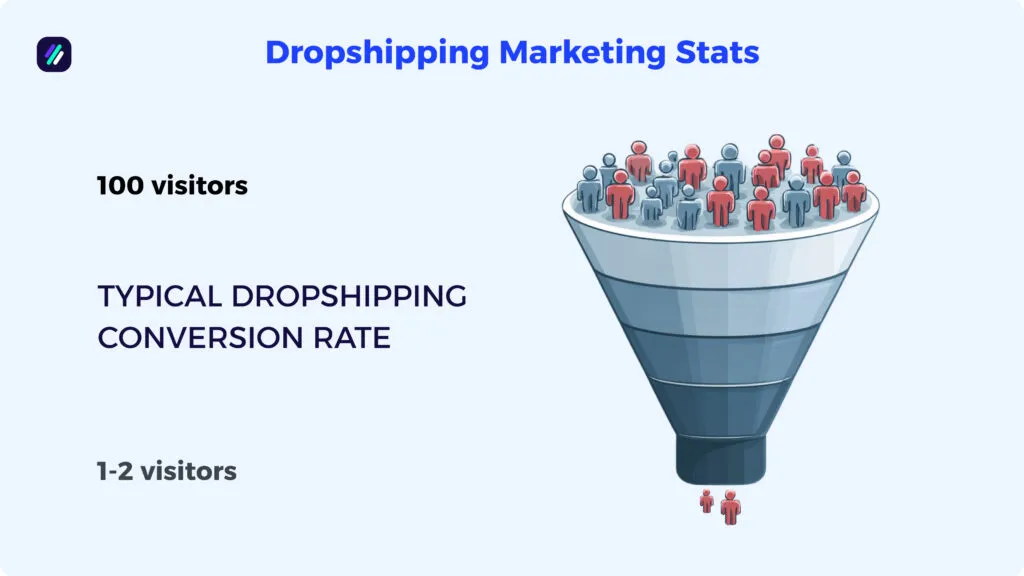
- Instagram and TikTok are the top choices for influencer campaigns among dropshippers.
- 68% of dropshipping stores get most of their traffic from Meta (Facebook + Instagram) ads.
- Influencer shoutouts can bring in 20–40% of a store’s first-month sales.
- Email marketing makes up 15–20% of total sales for established stores.
- Dropshipping ads cost between $0.35 and $1.20 per click, depending on competition.
Shipping, Fulfillment, and Customer Expectations
- Most buyers expect delivery within 7–10 business days, though many dropshippers still operate on 15–20 day timelines.
- Stores that offer tracking updates see 25% fewer refund or cancellation requests.
- 84% of online shoppers say they’re more likely to purchase from a store that clearly lists shipping times
- Dropshippers using local US or EU warehouses report up to 50% fewer customer complaints.
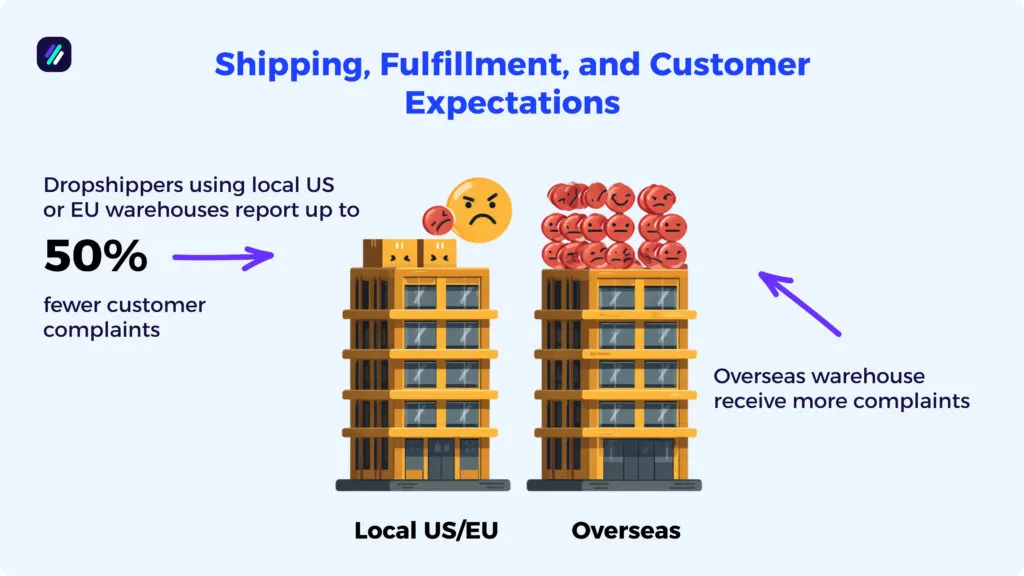
- Free shipping remains the #1 incentive influencing buyer decisions, even over discounts
- Return rates for dropshipping stores hover between 5% and 8%, depending on the product category.
Dropshipping Supplier & Sourcing Stats
- Over 84% of dropshippers say finding reliable suppliers is their main challenge.
- Stores that work with US-based suppliers get 35% faster shipping and 20% more repeat customers.
- Most dropshippers test 4 to 6 suppliers before choosing a long-term partner.
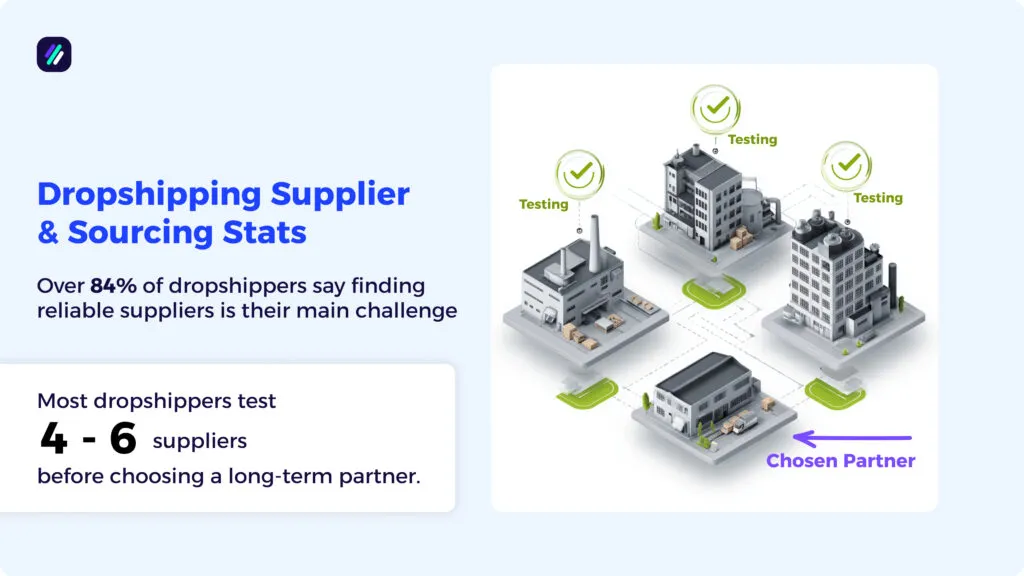
- 1 in 5 stores now use branded packaging or inserts instead of plain shipping.
- Top stores work with multiple suppliers to manage stock issues and price fluctuations.
AI and Automation in Dropshipping
- 75% of dropshipping businesses using automation for more than one task report higher profits.
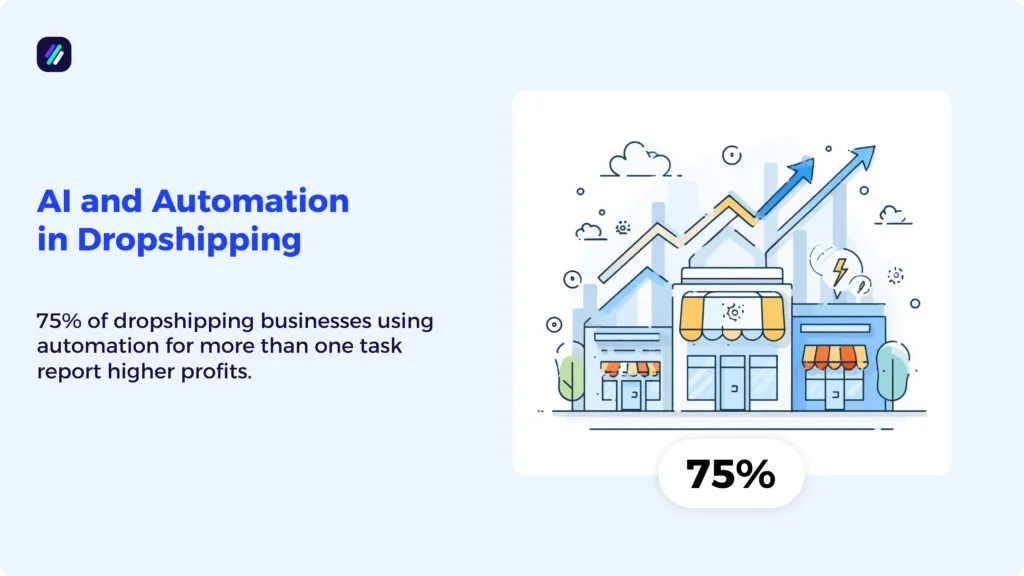
- 58% of stores use automation to manage inventory and supplier pricing in real time.
- Email automation tools (like abandoned cart flows) contribute to 15–20% of total store revenue.
- AI-driven product and pricing tools are helping stores increase ad efficiency and speed-to-market.
Other Statistics Posts:
- 70 Important Shopify Statistics
- 60 Important Dropshipping Statistics
- 47 Important Product Research Statistics
- 82 Most Important E-Commerce Statistics
- 80+ Important Print on Demand Statistics
- 59 Important eBay Statistics
Helpful Dropshipping Resources:
- What is Dropshipping
- Dropshipping vs Wholesale: Which One is Right For You?
- Amazon FBA vs Dropshipping: Which Model Works Best?
- Which Shopify Plan is Best for Dropshipping?













